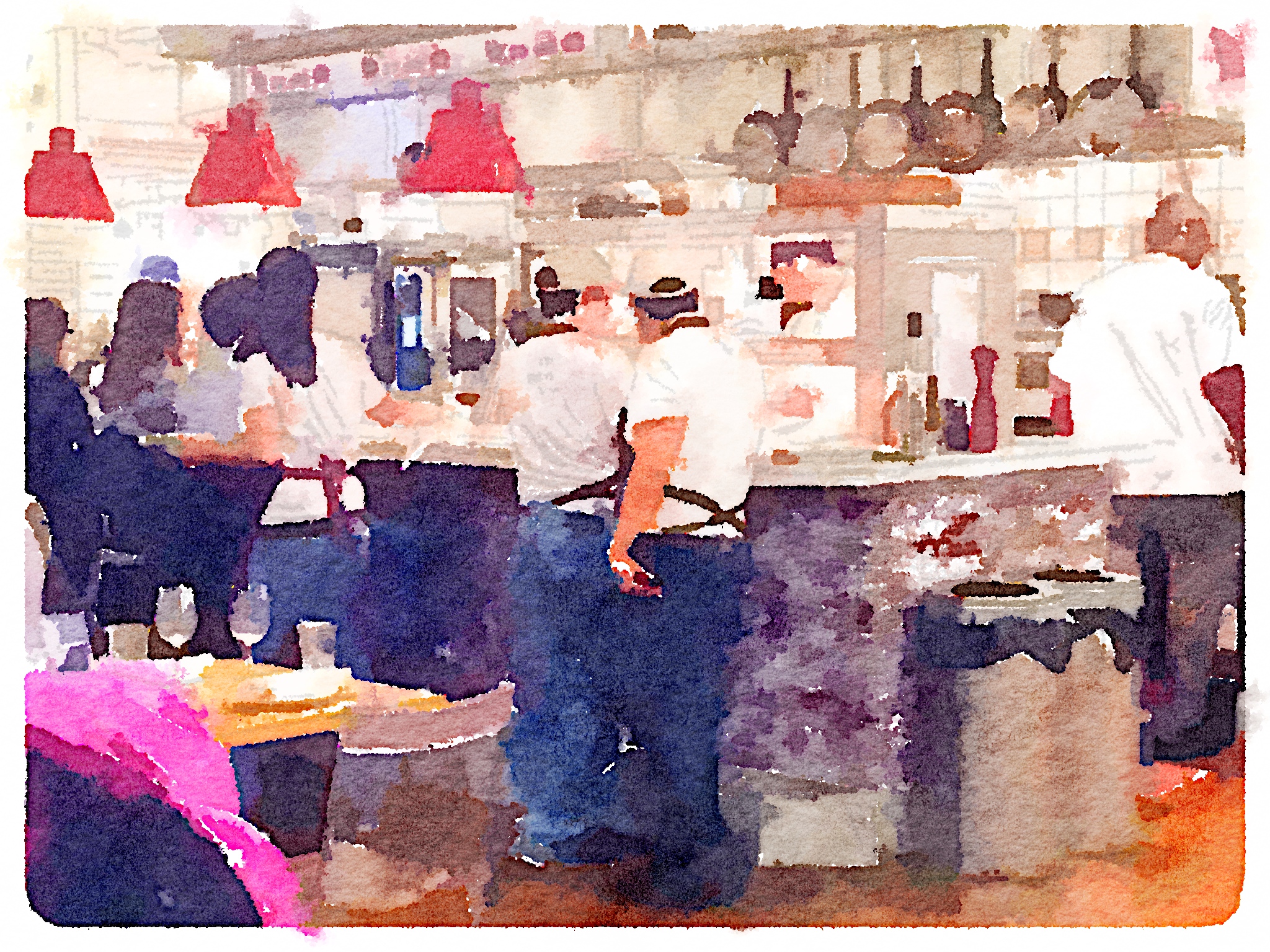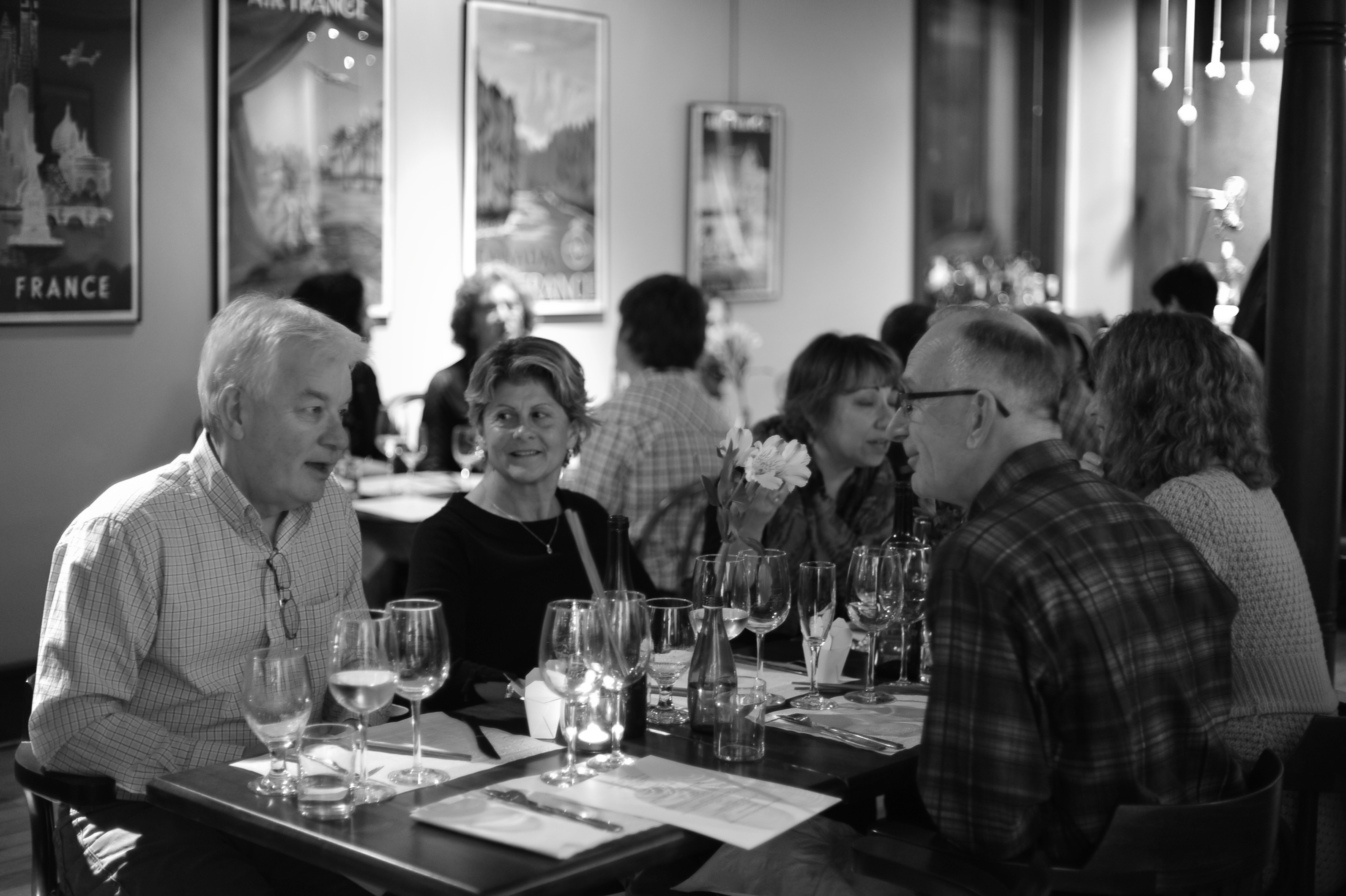
There are few things in life that vividly define the culture associated with a group of people more than dining out. Food is connected to nearly every aspect of life, family, and the art of living. A culture is a collection of life essentials including art, drama, literature, religion, music, food preparation and traditions, history, language, politics, etc. and as such – collectively define all levels of civility. Food, as part of this formula, also interacts with each of those other components of culture – so it might be said that it is a common denominator.
As one of the oldest professions known to mankind – cooking is a noble endeavor that serves as a portal for all that a culture means and restaurants are the vehicle for delivering this to and sharing culture with people of all ethnicities, race, genders, and beliefs. Since the days of early merchant travelers during Medieval and Renaissance days – restaurants have been integral to societal development and the sophistication of people. As Julia Child once stated (and I paraphrase): “Every great transition of the human race has paralleled a remarkable change in the way that we grow, harvest, process, prepare, serve, and consume food.” The restaurant table is the canvas on which every person involved in that process has an opportunity to paint and tell a story.
When we close a restaurant we lose that canvas, when we shutter all of those restaurants we lose a significant piece of humanity. Yes, we will move through this challenging time and there will be a restaurant business on the other end of Covid-19, but how can we re-create that canvas that will allow society to tell the story of a culture?
Think about the important aspects of our lives that have relied on restaurants as a vehicle for people to get together. We celebrate our sporting teams wins and losses over food and drink – without the restaurant there is less opportunity for this to define our tribes of support. We celebrate the union of two people through marriage over a plate of food and as such raise our glasses in love and support of their commitment. We bring intellectual conversation to a larger audience while we break bread around a common table. We discuss and sometimes resolve our political differences with fork and knife in hand. We laugh and revel in our friendships after a hard week’s work by clinking glasses in that neighborhood restaurant that serves and pampers us. We look that life partner in the eyes over a well-prepared plate of food, get on one knee in front of an audience and propose that two lives become one. We even rely on that restaurant to pass along bad news in hope that the environment will temper the emotions that accompany that message. Restaurants are absolutely essential to our way of life and the way that we communicate our feelings and emotions. Life without this common table would certainly be a bit empty.
Will the culture associated with dining out automatically return or will we need to re-learn what it means to break bread in public, raise a glass, and celebrate being alive? What must a restaurant, or the larger restaurant community do to ensure that it, once again, becomes a central part of life?
If we simply view the role of restaurants as a manufacturer of food for consumption, then we will miss the point and lose the café, bistro, trattoria, or diner’s true role in society. It is the experience of dining that is most important and it is this experience that allows a restaurant, or for that matter – the restaurant industry to flourish. As we prepare for the return to a “new normal” we must keep the larger role of restaurants in mind. Here are some thoughts:

[] NO ONE INDEPENDENT RESTAURANT CAN SOLVE THIS CHALLENGE:
For the culture of restaurants to return – every operation must collaborate with others in their community to build an atmosphere of common purpose. Individual restaurants succeed when all restaurants succeed. When neighboring restaurants understand their importance to the restoration of a positive cultural climate – then the atmosphere of hope and celebration becomes apparent. All for one and one for all should be the standard of operation.
[] KNOW THE MESSAGE – TELL THE STORY
The restaurant that knows the story behind the business and the community and tells that story in a heartfelt manner is the restaurant that will build relationships around the table. Customers may walk through the door initially because of the food, but will return time and again because of the story that the owners and staff tell.
[] THINK GLOBAL – ACT LOCAL
We are truly in this together. Every restaurant must think in terms of how do we help the entire industry rise again. At the same time it is how the operation expresses this goal in their local community that will ensure a steady flow of supporters. Become active in helping the industry rebuild itself, change where necessary, and polish its rough edges while at the same time do everything possible to collaborate with local vendors, organizations, farmers, and complementary businesses to show how essential the restaurant is to the culture of a town or neighborhood.

[] IT’S ALL ABOUT SERVICE – IT’S ALL ABOUT FOOD
When restaurants return they must understand that service and food are equal in importance to the guest. Great food without great service is shallow just as great service without great food is never a winning combination. Defining what each means is unique to every operation.
[] PEOPLE FIRST – RELATIONSHIPS FIRST
When all is said and done it is the people who work in a restaurant that paint the picture of success on that canvas and it is the relationships that are built between those staffers and guests that make all the difference between a successful restaurant and one that is simply biding time.
[] TREAT EVERYONE THE SAME AND EVERYONE DIFFERENTLY
One of the more challenging aspects of running any business, and particularly restaurants is that every customer walking through that door is unique and expects to be treated as such. We obviously need to have standards of operation, but if we are not prepared to adapt frequently to the needs of each guest then we may never reach a consistent level of success.
[] REMEMBER THE TDE
Finally, it is essential that every quality restaurant (regardless of the style, type of food, or price point) should learn that the restaurant “experience” is one that appeals to all of the human senses. Great restaurants appeal to the sense of smell by accentuating those positive aromas of the kitchen, the sense of sight through well appointed, clean and attractive restaurants and plate presentations, appropriate and complementary sounds whether they be the sounds of the kitchen or music that complements the experience, knowing that the physical sense of touch applies to the comfort of the chair, the weight of the flatware and glassware as it matches the type of food and price point, and the right textures of quality food on the plate, and finally the sense of taste – food must be consistently prepared in such a manner that causes the guest to pause and truly savor every bite. This is the Total Dining Experience (TDE).
The way to bring back the restaurant industry is to bring back its importance to the culture of a community and society. We can and must play our role in making sure that this is at the heart of our decision making process.
PLAN BETTER – TRAIN HARDER
Remember the TDE
Harvest America Ventures, LLC
Restaurant Consulting

Leave a comment